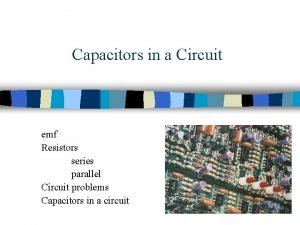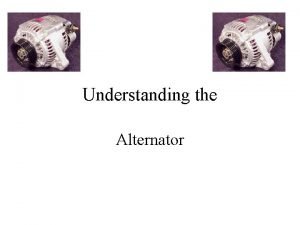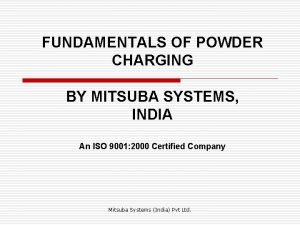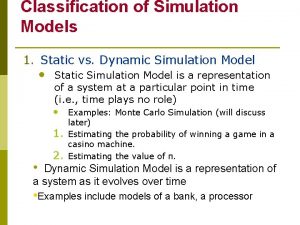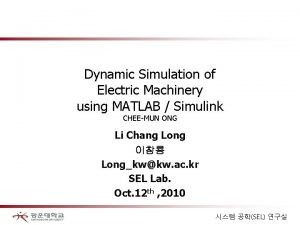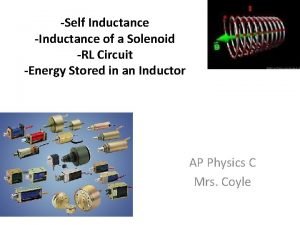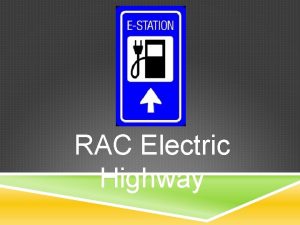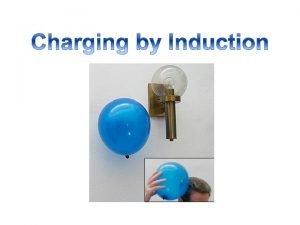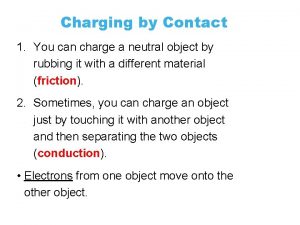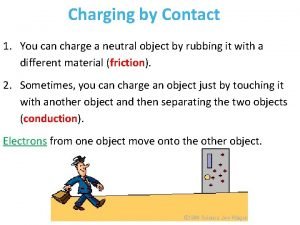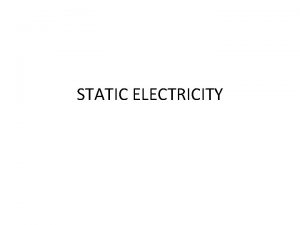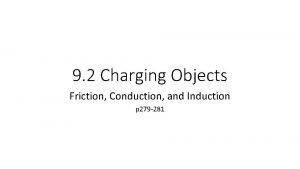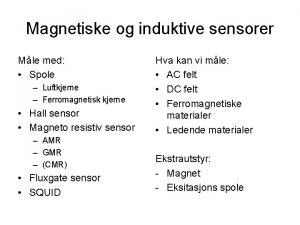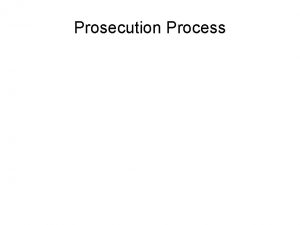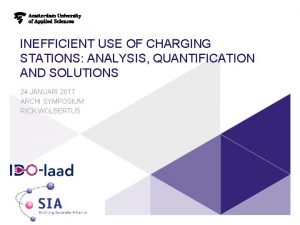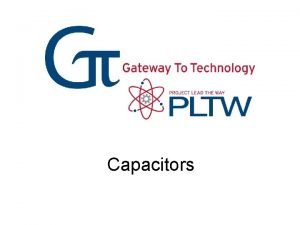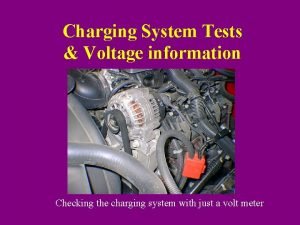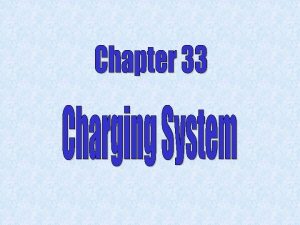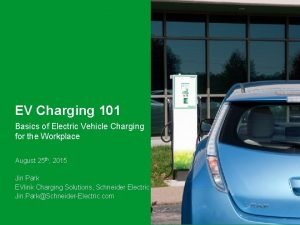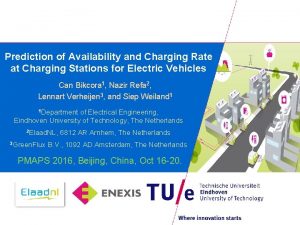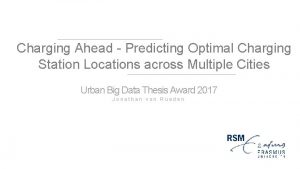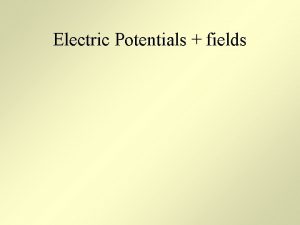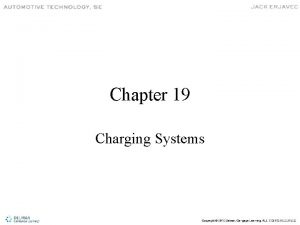Dynamic system simulation Charging Capacitor The capacitor is



























- Slides: 27

Dynamic system simulation

Charging Capacitor • The capacitor is initially uncharged • There is no current while switch S is open (Fig. b) • If the switch is closed at t= 0 (Fig. c) the charge begins to flow, setting up a current in the circ uit, and the capacitor begins to charge • Note that during charging, charges do not jump across the capacitor plates because the gap between the plates represents an open circuit • The charge is transferred between each plate and its connecting wire due to E by the battery • As the plates become charged, the potential difference across the capacitor increases • Once the maximum charged is reached, the current in the circuit is zero

Charging Capacitor (2) • Apply Kirchhoff’s loop rule to the circuit after the switch is closed • Note that q and I are instantaneous values that depend on time • At the instant the switch is closed (t = 0) the charge on the capacitor is zero. The initial current • At this time, the potential difference from the battery terminals appears entirely across the resistor • When the charge of capacitor is maximum Q, The charge stop flowing and the current stop flowing as well. The V battery appears entirely across the capacitor

Charging Capacitor (3) • The current is , substitute to voltage equation • The equation is called Ordinary Differential Equation (ODE) • How to solve this equation? Solve mean we can express the equation into q(t)=….

Solution of ODE • Using Deterministic Approach • Using Numerical approach: 1. Euler’s method 2. Heun’s method 3. Predictor-corrector method 4. Runge-kutta method 5. Etc.

Deterministic Approach • The current is , substitute to voltage equation • Integrating this expression • we can write this expression as

Deterministic Approach • If you integrate to obtain the solution, then you use exact/deterministic method. • However in practical use, we often cannot integrate the function directly. • The numerical approach is often preferable.

Numerical approach

Numerical approach (2)

Numerical approach (3)

Solution in Matlab • Using ODE solver (m-file) • Using Simulink




State space of charging capacitor

State space in practical use • In practical use, the A matrix consists of many states space • Simulating the power system is just solving the differential equation of system states and (sometimes) algebraic equation related to load flow. • Normally we use states space in power system simulation such as rotor speed, rotor angle, Flux-linkage change, etc.

State space in practical use (2) • Example: state space of synchronous generator with PSS

Order greater than 1 (n>1) • Suppose second order (n=2) equation • We need to write second order equation into n order first order differential equation • These equations can be solved simultaneously • Homework 1: how to solve this equation for a=b=c=1 using Matlab (use function: ode 45)? With all initial states are zero

Transformer Simulation • Equivalent circuit

Transformer Simulation (2) • Voltage Equation • The flux linkage per second • Mutual flux linkage

Transformer Simulation (3) • The current can be expressed as • Eqn. 4. 29 is now • Collecting mutual flux linkage

Transformer Simulation (4) • Define • Eqn 4. 33 can be expressed as

Transformer Simulation (5) • The flux linkage in integral form

Transformer Simulation (6)

Implementation in Simulink Homework 2: Build this block in Simulink with all initial values of flux linkage are zero

Rules for student • Maksimal terlambat 20 min • Tidak boleh titip absen • Tidak boleh menggunakan barang elektronik kec berhubungan dengan kegiatan perkuliahan

• All materials are posted at http: //husniroisali. staff. ugm. ac. id/
 Charging capacitor formula
Charging capacitor formula The alternator brush rides on a
The alternator brush rides on a Thermolite solar panels
Thermolite solar panels Powder charging system
Powder charging system Purpose of charging system
Purpose of charging system Static vs dynamic simulation
Static vs dynamic simulation Simulation
Simulation Transferered
Transferered Dts expert 500 gate motor manual
Dts expert 500 gate motor manual Self inductance of coil formula
Self inductance of coil formula Rac charging stations
Rac charging stations Ev charger installation montana
Ev charger installation montana Charging by induction temporary
Charging by induction temporary Charging by contact examples
Charging by contact examples Example of charge by contact
Example of charge by contact Charging toward cleaner air in london
Charging toward cleaner air in london Terra 53 cjg
Terra 53 cjg Charging order protection florida
Charging order protection florida Charging by induction
Charging by induction Charging by contact examples
Charging by contact examples Conduction induction and friction
Conduction induction and friction Charging by conduction
Charging by conduction Induktives charging amr
Induktives charging amr Charging pyramid
Charging pyramid Eagle court of honor scoutmaster minute
Eagle court of honor scoutmaster minute A sworn written statement charging a person with an offense
A sworn written statement charging a person with an offense Charging stations
Charging stations Santa clara fleet management electric vehicle charging
Santa clara fleet management electric vehicle charging
